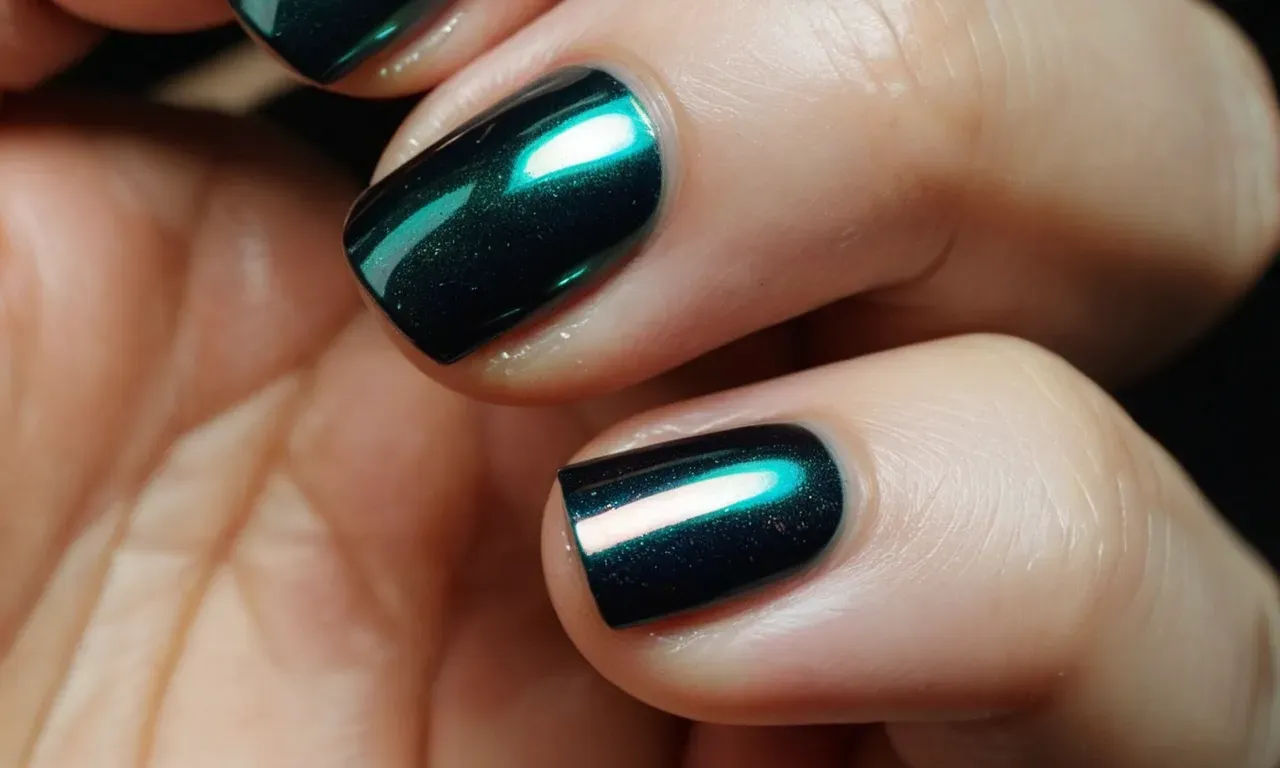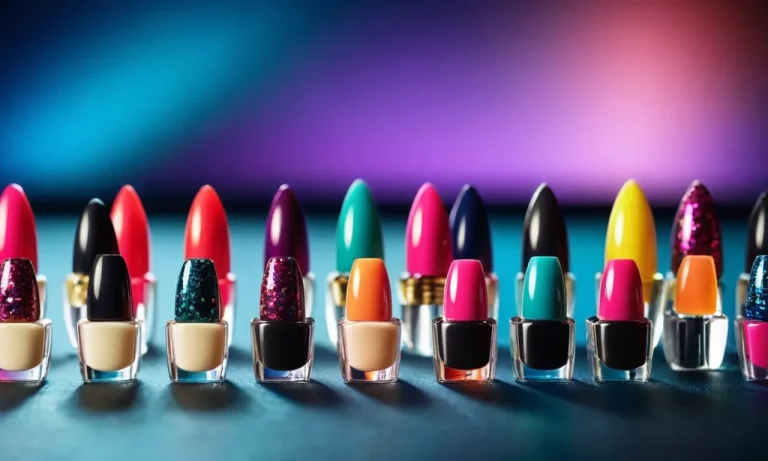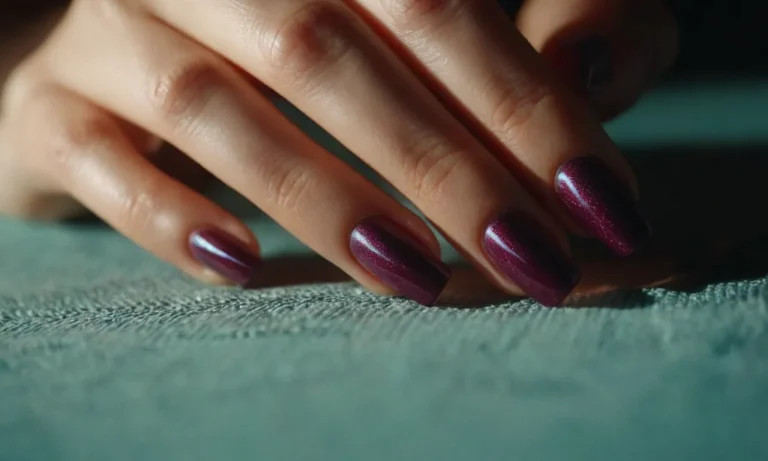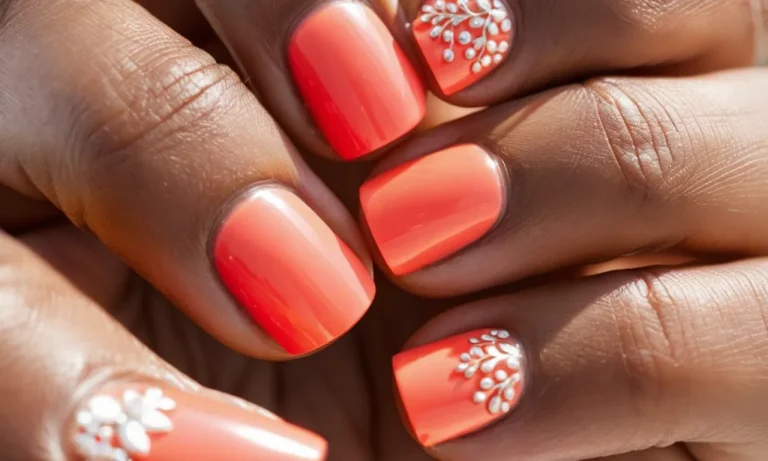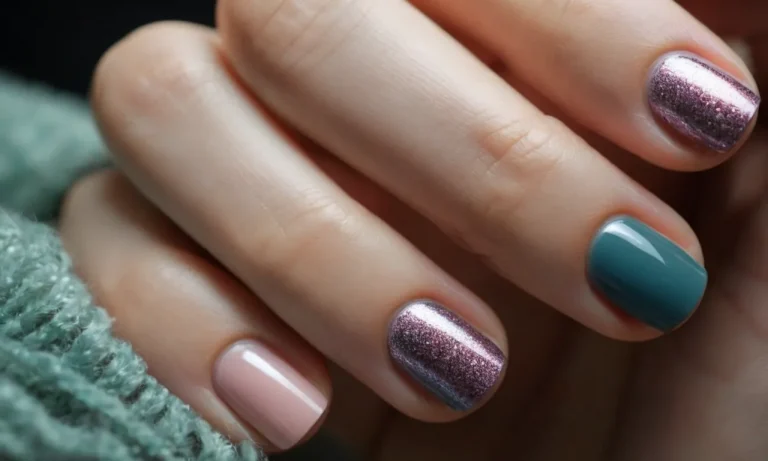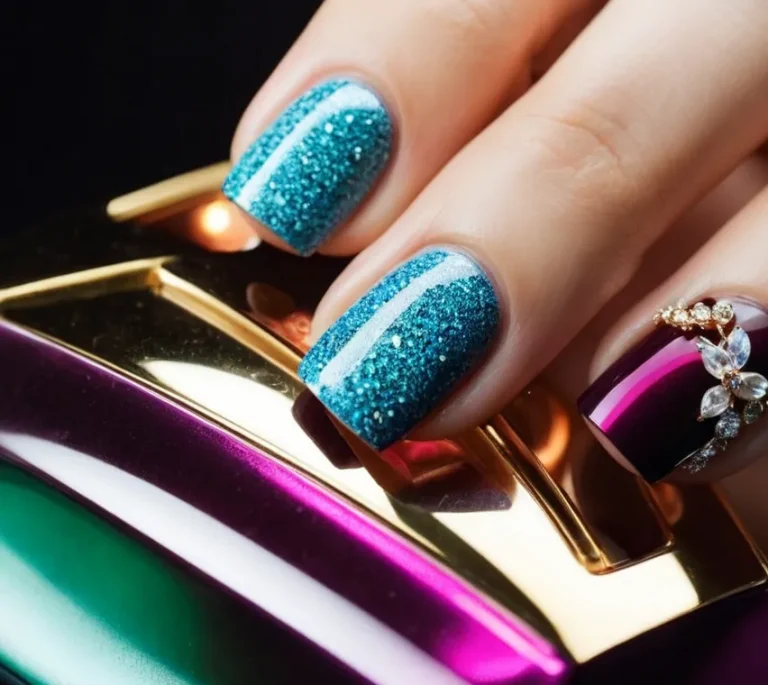Why Does My Nail Polish Chip After 2 Days?
If you’ve just painted your nails only to see chips and dings in the polish after a couple of days, you’re not alone. Many nail polish wearers face the frustration of quick tip wear and wonder if they’re doing something wrong or if it’s just impossible to get long-lasting manicures at home.
If you’re short on time, here’s a quick answer to your question: Nail polish chips due to factors like application mistakes, lack of base and top coat, oil on the nails, and the type of activities you do with your hands after painting.
Choosing quality polishes and supplies, properly preparing nails, using base and top coat, and avoiding nail stress can all help extend the life of a manicure.
In this comprehensive guide, we’ll explore all the reasons why nail polish never seems to last as well as professional manicures. Read on to learn about common nail polish mistakes and how to get your DIY manicures to stay chip-free for up to a week or more.
Nail Polish Formula and Ingredients
Poor Adhesion
One of the main reasons nail polish chips is due to poor adhesion between the polish and the natural nail plate. Nail polish is made up of a film-forming agent, usually nitrocellulose, which allows the polish to dry and adhere to the nail.
However, if the formula is not optimized for adhesion, the polish can begin peeling off in as little as a day or two. Manufacturers may use insufficient amounts of nitrocellulose or adhesion promoters like tosylamide/formaldehyde resin in order to cut costs.
This results in a weaker bond between the polish and nail that is prone to early chipping.
Quick Drying Formulas
Many nail polishes today are formulated to dry extremely quickly, sometimes in as little as 30 seconds. While this is convenient, it often comes at the expense of durability. Quick dry polishes typically have a high concentration of solvents which cause the polish to set rapidly.
However, this means the polish does not have time to form a strong, flexible bond to the natural nail. As a result, quick dry nail polishes are more likely to chip sooner. Slower drying polishes allow more time for thorough bonding between layers and to the nail plate itself.
3-Free and 5-Free Formulas
In recent years, there has been a push for “free-from” nail polishes that exclude certain hazardous ingredients like dibutyl phthalate (DBP), toluene, formaldehyde, camphor and triphenyl phosphate (TPHP).
While this is better for human health and the environment, it can negatively impact the durability of the polish. Key components like plasticizers and solvents are removed, which helps the polish adhere to the nail.
According to nail care experts, it usually takes more coats of 3-free and 5-free polishes to get good coverage and lasting results. So if you notice chipping within a couple days of application, try using a base coat first and applying multiple thin layers of color.
Thinner is Better
Nail polish formulas have become thinner in recent decades, which can also lead to it chipping faster. Thick polishes used to be the norm, but they took longer to dry. Brands moved towards thinner, watery textures so polish could dry quickly and be reapplied sooner.
However, thinner polish also has less binding power. Experts recommend looking for polish with a thicker, gel-like consistency that fully wraps around the edges of your nail. Alternatively, use a thickening top coat designed to seal in color and add a protective barrier against chips and dings.
Nail Prep and Base Coat
Dehydrated Nails
Keeping nails hydrated is key for strong, healthy nails that can better hold onto nail polish. Dehydrated nails become brittle and peel more easily. To hydrate nails, regularly apply cuticle oil, petroleum jelly, or moisturizing creams at least twice a day.
These provide moisture to prevent nails from becoming too dry. You can also use a nail strengthening treatment 1-2 times per week to nourish nails.
Oils and Moisturizers
Using oils and moisturizers is one of the best ways to prepare nails for polish. Cuticle oil applied daily provides hydration and nutrients to condition the nails and cuticles. Look for cuticle oils with vitamin E, jojoba oil, or coconut oil.
You can also rub petroleum jelly into the nails and cuticles overnight as a moisturizing treatment before polish application.
Ridges and Peeling
If your nails have pronounced ridges or are peeling, use a buffer to gently smooth the nails before polish application. This removes any rough edges and creates a smooth surface for the polish to adhere to. Be very gentle when buffing to avoid thinning the nails.
An emery board can also be used instead of a buffer. Avoid using acetone-based nail polish removers as these dry out nails.
Importance of Base Coat
No nail polish look is complete without a base coat. Using base coat is crucial for protecting nails and helping polish last longer. The base coat creates a smooth foundation, preventing staining of the nails. It also helps polish adhere evenly to the nails.
Some base coats are enriched with strengthening ingredients to nourish nails. Apply evenly over the nails before adding color.
Nail Polish Application Techniques
Thin Layers
Applying nail polish in thin, even layers is key to getting a long-lasting manicure. Thick globs of polish take longer to dry, and the extra layers make it more likely that the polish will chip or peel.
For the most flawless finish, use a brush to apply two or three thin coats of polish, allowing each layer to dry completely before adding the next. The thinner the coats, the smoother and more durable the final result will be.
Taking the time to layer polish correctly can double or even triple the life of your manicure!
Cap the Free Edge
A common mistake that leads to quick chipping is neglecting to seal the very tip of the nail with polish. This area at the end of the nail is called the “free edge.” Leaving it bare exposes the nail to damage. Make sure to brush polish over the free edge with each layer to seal in your manicure.
Capping the tip creates a protective buffer that prevents chips and cracking.
Avoid Flooding Cuticles
Getting polish on your cuticles is another nail sin that can ruin a manicure fast. The cuticle is the thin skin around the base of the nail. When polish pools here, it can lift and peel quickly. Before polishing, push back cuticles gently with a tool or softener.
Then use a brush to guide the polish onto the nail, moving from base to tip while avoiding the skin. You want to coat the nail itself rather than flooding the surrounding area. Tidy up the edges with a pointed q-tip as needed.
Don’t Skimp on Drying Time
Impatience is the enemy of a lasting manicure! Failing to allow each layer of polish adequate drying time is asking for chips and smudges. Most regular nail polishes take at least 5 minutes to set between coats. Quick-dry top coats still require 60-90 seconds of drying time to be effective.
Resist the urge to add another layer too soon. Let each application dry thoroughly before moving on. Use a quick-drying spray if needed. Your patience will pay off with a smooth, durable finish that dazzles for days.
Top Coat Selection
Quick-Dry Formulas
Selecting a quick-dry top coat is one of the best ways to prevent nail polish from chipping. Quick-dry top coats contain ingredients like acrylates which help speed up the drying time of your manicure. This helps “lock in” the color and prevents chips and dings.
Some popular quick-dry top coat brands include Seche Vite, Essie Good to Go, and OPI Rapidry. Applying a layer as the final step can cut drying time down from 30-60 minutes to just 10 minutes or less!
Glossy vs Matte Finishes
The type of top coat finish you choose also plays a role in chipping. Glossy top coats tend to be more flexible and durable than matte finishes. Matte top coats have a flatter, duller look which is achieved by including silica in the formula. The silica creates a rougher texture that scatters light.
Unfortunately, these matte particles make the polish more prone to cracking and peeling. If you want long-lasting color, go for a shine! Glossy top coats like Sally Hansen’s Miracle Gel provide a smooth, flexible layer of protection.
Top Coat Purpose
It’s important to remember the purpose of a top coat—to seal and protect your manicure. Top coats create a protective barrier over base coat and nail polish color. They help prevent chips, smudges, and rapid fading.
When choosing a top coat, look for formulas labeled as a “sealer”,”hardener”, or “finisher”. Avoid products labeled as a “mattifier” or “flattener”, as these are intended to deliberately dull the finish rather than protect it. A quality top coat is essential for any manicure you want to prolong.
Applying it correctly as the final step of your manicure routine is key!
Nail Care and Avoiding Polish Stressors
Household Chemicals
Exposure to harsh household chemicals like cleaning products, laundry detergent, and dish soap can cause nail polish to chip more quickly. The drying effects of these products can lead to brittle, flaky nails that simply cannot hold onto polish.
Wearing gloves when washing dishes or cleaning can help create a protective barrier. An even better solution is to switch to more natural and moisturizing cleaners whenever possible. Your nails will thank you!
Water Exposure
Frequent hand-washing and exposure to water are major nail polish stressors. Water, whether hot or cold, can penetrate and break down nail polish bonds. Unfortunately, it’s pretty much impossible to avoid washing your hands. But there are some tips to help minimize chipping.
Always wear gloves when washing dishes or cleaning. After hand-washing, thoroughly dry nails and apply cuticle oil around the tips to help seal in moisture. Keeping nails short can also reduce water exposure to the polish.
Opening Packages
Trying to tear open packaging and plastic wraps can put stress on fragile nail polish. The pulling and tugging motions can cause chips and cracks to form, especially around the tips. Instead of using your nails, try using scissors or a knife to open packages cleanly.
You could also use something like a key or coin to break the seals instead. And be sure to file and buff nails smooth so there are no rough edges for packaging to catch on.
Typing and Texting
All the tapping and clicking we do on phones, tablets, and keyboards can spell disaster for a fresh manicure. The impact causes vibration and force that can make polish crack and peel. When possible, try using voice dictation instead of typing.
Apply a thick, protective top coat to add reinforcement against chipping. There are even special nail hardeners containing ingredients like calcium, formaldehyde, and silk fibers that create a resilient barrier.
Gel Manicure Damage
While gel manicures are known for their long-lasting wear, the UV setting process can actually weaken natural nails over time and cause lifting of polish. Make sure to properly prep nails and avoid over-filing the surface when getting a gel manicure.
Using treatments that contain collagen can help reinforce nails and prevent damage. Take occasional breaks from gels and get a traditional manicure to give nails time to recover strength. Getting gels removed properly by soaking instead of roughly filing them off will also help prevent weakening of the nail plate.
Conclusion
With some tweaks to your nail care routine and manicure techniques, you can get your at-home manicures to last 7-10 days or more before showing tip wear and chips.
Be sure to choose quality nail polish formulas, thoroughly prep nails, apply base and top coat, use thin layers of color, and avoid activities that stress or pick at the polish. If you take the time to care for your nails and paint them properly, you’ll be rewarded with long-lasting, beautiful nails that make it from one manicure to the next.

